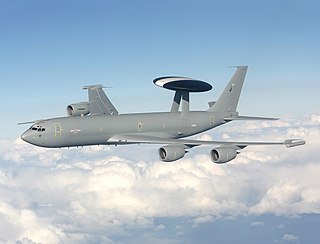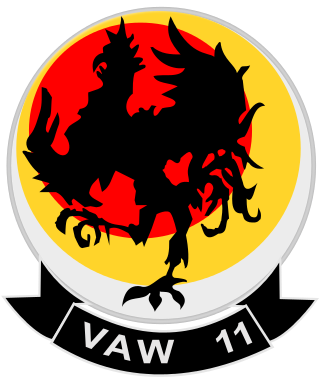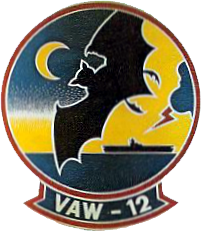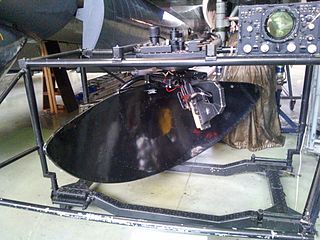
The Northrop Grumman E-2 Hawkeye is an American all-weather, carrier-capable tactical airborne early warning (AEW) aircraft. This twin-turboprop aircraft was designed and developed during the late 1950s and early 1960s by the Grumman Aircraft Company for the United States Navy as a replacement for the earlier, piston-engined E-1 Tracer, which was rapidly becoming obsolete. The aircraft's performance has been upgraded with the E-2B and E-2C versions, where most of the changes were made to the radar and radio communications due to advances in electronic integrated circuits and other electronics. The fourth major version of the Hawkeye is the E-2D, which first flew in 2007. The E-2 was the first aircraft designed specifically for its role, as opposed to a modification of an existing airframe, such as the Boeing E-3 Sentry. Variants of the Hawkeye have been in continuous production since 1960, giving it the longest production run of any carrier-based aircraft.

The Douglas A-1 Skyraider is an American single-seat attack aircraft in service from 1946 to the early 1980s, which served during the Korean War and Vietnam War. The Skyraider had an unusually long career, remaining in front-line service well into the Jet Age ; thus becoming known by some as an "anachronism". The aircraft was nicknamed "Spad", after the French World War I fighter.

An airborne early warning and control (AEW&C) system is an airborne radar system designed to detect aircraft, ships, vehicles, missiles, and other incoming projectiles at long ranges and perform command and control of the battlespace in an air engagement by directing fighter and attack aircraft strikes. AEW&C units are also used to carry out surveillance, including over ground targets and frequently perform battle management command and control (BMC2). When used at altitude, the radar on the aircraft allows the operators to detect and track targets and distinguish between friendly and hostile aircraft much farther away than a similar ground-based radar. Like a ground-based radar, it can be detected by opposing forces, but because of its mobility and extended sensor range, it is much less vulnerable to counter-attacks.

The Grumman E-1 Tracer was the first purpose-built airborne early warning aircraft used by the United States Navy. It was a derivative of the Grumman C-1 Trader and entered service in 1958. It was replaced by the more modern Grumman E-2 Hawkeye by the 1970s.

The Fairey Gannet is a carrier-borne aircraft that was designed and produced by the British aircraft manufacturer the Fairey Aviation Company. It was developed for the Royal Navy, being the first fixed-wing aircraft to combine both the search and strike portions of anti-submarine warfare (ASW) operations to be operated by the Fleet Air Arm (FAA).

849 Naval Air Squadron was a squadron of the Fleet Air Arm, the Air Arm of the British Royal Navy. It was formed during the Second World War as a carrier based torpedo-bomber, unit, flying missions against Japanese targets in the Far East. Its service since the Second World War has been as an airborne early warning squadron, flying fixed winged Skyraiders and Gannets from the Royal Navy's fixed wing carriers from 1952 until 1978, and airborne early warning Sea King helicopters from 1982 to 2018.

A folding wing is a wing configuration design feature of aircraft to save space and is typical of carrier-based aircraft that operate from the limited deck space of aircraft carriers. The folding allows the aircraft to occupy less space in a confined hangar because the folded wing normally rises over the fuselage decreasing the floor area of the aircraft. Vertical clearance is also limited in aircraft carrier hangar decks. In order to accommodate for this, some aircraft such as the Supermarine Seafire and Fairey Gannet have additional hinges to fold the wingtips downward, while others such as the S-3 Viking have folding tails. The F-14 Tomcat's variable-sweep wings could be "overswept" to occupy less space.

A radar picket is a radar-equipped station, ship, submarine, aircraft, or vehicle used to increase the radar detection range around a nation or military force to protect it from surprise attack, typically air attack, or from criminal activities such as smuggling. By definition a radar picket must be some distance removed from the anticipated targets to be capable of providing early warning. Often several detached radar units would be placed to encircle a target to provide increased cover in all directions; another approach is to position units to form a barrier line.

Searchwater was a maritime surveillance radar developed by Thorn EMI under project P1149. This type of radar has been in service with the Royal Air Force Hawker Siddeley Nimrod aboard the MR2 variant since the 1970s.
The Vought XS2U was a design for an all-weather, carrier-based anti-submarine warfare (ASW) aircraft. A twin-engine, twin-tailed, mid-wing, propeller-driven design with tricycle landing gear, it lost to the Grumman S2F Tracker in the United States Navy competition, and the two prototypes were not completed.

The British Aerospace Nimrod AEW3 was a proposed airborne early warning (AEW) aircraft which was to provide airborne radar cover for the air defence of the United Kingdom by the Royal Air Force (RAF). The project was designed to use the existing Nimrod airframe, in use with the RAF as a maritime patrol aircraft, combined with a new radar system and avionics package developed by Marconi Avionics.

The Fairey Gannet AEW.3 is a variant of the Fairey Gannet anti-submarine warfare aircraft intended to be used in the airborne early warning (AEW) role on aircraft carriers of the Royal Navy. It was introduced to service in 1959 to replace the obsolete Douglas Skyraider, and was intended as an interim solution until the planned introduction of a new, purpose built AEW platform for use on the planned CVA-01 aircraft carriers. Neither the new aircraft carriers nor the new AEW aircraft were proceeded with, and the Gannet AEW.3 remained in service until the last aircraft carrier that could operate it was retired in 1978.

Carrier Airborne Early Warning Squadron 11 (VAW-11), nicknamed the "Early Elevens", was an airborne early warning squadron, whose mission was to provide services to fleet forces and shore warning networks, under all weather conditions. The squadron was also responsible for combat air patrol and Anti-submarine warfare (ASW) missions. It was based at NAS North Island in San Diego, California, but had detachments serving aboard 13 attack carriers and antisubmarine carriers in the Pacific Fleet.

Carrier Airborne Early Warning Squadron 12 (VAW-12), nicknamed the "Bats", was a U.S. Navy Carrier Airborne Early Warning Squadron. The squadron was disestablished on 1 April 1967.

Carrier Airborne Early Warning Squadron 110 (VAW-110), nicknamed the "Firebirds", was an aviation unit of the United States Navy based at NAS Miramar.The Firebirds were a training squadron for the E-2 Hawkeyes. It was disestablished in September 1994.

744 Naval Air Squadron is a Naval Air Squadron of the Royal Navy's Fleet Air Arm. It was initially active in 1943, based in Nova Scotia. A second 744 NAS was formed, in early 1944, in Northern Ireland, for Merchant Aircraft Carrier training, meaning the first iteration was re-designated 754 NAS. The squadron's primary focus turned to Anti-submarine warfare training, which then further developed into trialing new submarine detection technology, ending in 1956. In 2018 it reformed as the Mission Systems and Armament Test and Evaluation Squadron.
Radar, Air-to-Surface Vessel, or ASV radar for short, is a classification used by the Royal Air Force (RAF) to refer to a series of aircraft-mounted radar systems used to scan the surface of the ocean to locate ships and surfaced submarines. The first examples were developed just before the opening of World War II and they have remained a major instrument on patrol aircraft since that time. It is part of the wider surface search radar classification, which includes similar radars in ground and ship mountings.
The Xi'an KJ-600 is a Chinese twin-propeller, quad-tail, high-wing military aircraft designed for cargo and airborne early warning and control (AEW&C), intended to be deployed on Type 003 aircraft carriers of the People's Liberation Army Navy from around 2024.

The AN/APS-20 was an airborne early warning, anti-submarine, maritime surveillance and weather radar developed in the United States in the 1940s. Entering service in 1945, it served for nearly half a century, finally being retired in 1991. Initially developed at Massachusetts Institute of Technology (MIT) under Project Cadillac, the radar was developed to be carried by aircraft to extend the sensor range of ships by placing a radar at altitude. Although developed for carrier-borne operation, first being installed in the single-engined General Motors TBM-3W Avenger, it was also used in larger four-engined airframes, the last being a fleet of Avro Shackleton AEW.2 which were converted from maritime patrol aircraft. Similarly, although developed for detecting aircraft, it saw extensive service in anti-submarine and maritime patrol roles and was one of the first radars to be used in researching extreme weather like hurricanes by agencies like the Environmental Science Services Administration (ESSA). As well as the United States, the radar was used by a large number of services in other countries, including the French Navy, Japan Maritime Self-Defense Force (JMSDF), Royal Air Force (RAF) and Royal Canadian Air Force (RCAF). Early versions of the radar could see a low-flying aircraft at 65 nautical miles and a ship at 200 nautical miles. This was improved, so that later versions had a range against aerial targets of 115 nautical miles.



















